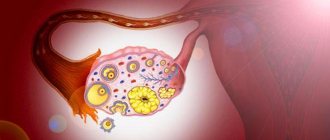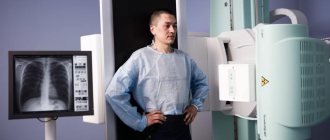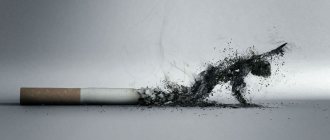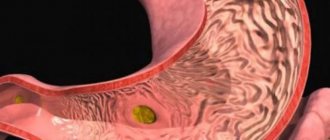Purulent bronchitis is an inflammatory process of the upper respiratory tract, which affects the bronchi. The production and secretion of mucopurulent or purulent secretion occurs. The etiology of the disease is caused by an infectious agent. The main complaint is a cough with purulent sputum. Patients also complain of fever, shortness of breath, and intoxication of the body.
The diagnosis is established after examining the patient, determining the symptoms and clinical picture, studying a chest x-ray, and microscopic examination of sputum. Purulent bronchitis in adults and children can be treated with antibiotics, physiotherapeutic procedures, and expectorants.
Causes
The development of purulent or mucopurulent bronchitis is caused by the complex influence of infectious agents, exposure to a polluted environment and endogenous (internal) factors.
External factors
- air pollution;
- complicated climatic conditions;
- household agents - house dust, detergents.
Internal factors
- bad habits;
- advanced age;
- unhealthy diet;
- immunodeficiency of various origins.
These triggers damage the mucous membrane of the respiratory tract and facilitate the attachment of infectious agents. A significant role is played by the reduction of local and general resistance of the body due to respiratory viruses and influenza.
Bacteria play the main role in the formation and development of purulent bronchitis. More often than others, the disease is provoked by the addition of pneumococcus. The infection is maintained and aggravated by chronic infectious foci in the nasopharynx or paranasal sinuses. In this case, tonsillitis and sinusitis develop.
Helpful advice: To sanitize possible infectious foci, treatment should be accompanied by consultations with related doctors.
The course of the disease may become more complicated due to smoking, concomitant pathologies of the respiratory system - obstructive pulmonary disease, pneumonia, tuberculosis, bronchial asthma.
Chronic and acute purulent bronchitis sometimes develops against the background of inadequate treatment for a viral infection, the catarrhal form of the disease. Sometimes there is a reduced sensitivity of microorganisms to antibacterial drugs, which aggravates the clinical symptoms and course of the disease.
If the respiratory organs are exposed to irritation for a long time due to mechanical action, physical or chemical agents, a violation of secretory activity is formed. This leads to deterioration of self-cleaning of the airway lumen.
Note: Catarrhal and purulent bronchitis have a similar etiology and clinical manifestations.
Increased function of secretory cells in adults and children leads to changes in the nature and composition of mucus. This entails a decrease in the protective properties of the bronchi, which has a beneficial effect on the vital activity of pathogenic microorganisms.
The inflammatory process caused by these changes affects the composition of the produced mucus, which takes on the character of purulent sputum due to an increase in the concentration of neutrophilic leukocytes in the mucus. The mucus becomes purulent and viscous, making it difficult to cough up.
How does the disease develop?
Bacteria are the culprits of this dangerous pathology. Carriers of infection enter the body through airborne droplets (if bronchitis is secondary, through blood and lymph flow).
An organism weakened after suffering from influenza, sore throat, tracheitis, or acute respiratory viral infection is not able to resist bacterial activity.
Rapidly multiplying microorganisms cause swelling of the bronchi , causing shortness of breath and the appearance of thick sputum. Air pollution, passive smoking, allergic reactions, irritating the bronchi, make them even more vulnerable to bacteria.
The mechanism of disease development is divided into two phases:
- Primary . Damage to the alveoli and bronchi.
- Secondary . The inflammatory process also affects other respiratory organs, and deep damage to the lungs occurs.
The development of the disease takes a long time. If the disease is recognized at the first stage and therapy is carried out correctly, recovery is guaranteed. But, when the patient again surrounds himself with provoking factors, purulent bronchitis returns and develops into a chronic form.
How to recognize chronic purulent bronchitis
Chronic purulent bronchitis is characterized by a long-term, sluggish form with periods of remission and relapse.
This type of disease does not have pronounced symptoms. The pathology is diagnosed when periods of exacerbations occur from 2-3 months a year for 2 years.
A distinctive feature of the disease is a sharp increase in the amount of expectorated sputum (the volume can reach 250 ml per day). In addition to pus, blood streaks are observed in the mucus. Relapses are provoked by even the slightest hypothermia of the body and a mild cold.
Danger of pathology
With purulent bronchitis, there is a high risk of developing pulmonary obstruction (COPD) . This probability increases when the patient is over 60 years of age. Obstruction of the lungs leads to irreversible changes in the lung tissue and disruption of the entire respiratory system.
Important! If a patient has obstruction of the lungs, it is no longer possible to restore and normalize the functions of the respiratory apparatus.
Purulent bronchitis is an extremely dangerous and serious pathology. The disease must be diagnosed promptly and treated immediately.
Symptoms
A patient’s “acquaintance” with catarrhal or purulent bronchitis begins after a cold, hypothermia, an episode of allergies, or due to reinfection from a chronic focus. The preceding clinical manifestations are rhinitis and tracheitis. This is explained by the descending development of the disease.
Precursors of bronchitis
The basic syndrome of purulent bronchitis is intoxication of the body, accompanied by shortness of breath, hacking cough with the release of yellow or green purulent sputum. There is weakness, lethargy, sweating, and a gradual increase in body temperature to 37.2–38 ºC. The chronic version of the course is characterized by episodic expectoration. Due to severe weakness and shortness of breath, patients are advised to avoid physical activity.
Note: Hemoptysis is a rare symptom. Doctors explain it as an injury to the mucous membrane of the respiratory tract.
If purulent bronchitis drags on, obstruction may develop. In this case, an obstructive form of bronchitis occurs. Shortness of breath noticeably increases, whistling appears when breathing, patients complain of difficult coughing up mucus. The course of the disease worsens, and there is a risk of developing pulmonary emphysema and complications of the cardiovascular system.
Physiotherapy
Physiotherapeutic treatment methods are widely used in pulmonology. They make it possible to speed up recovery and complete recovery of the patient. With their help, you can improve bronchodrainage and reduce shortness of breath.
If wheezing persists for a long time, inhalation with a nebulizer should be included in the treatment regimen.
Inhalations
If wheezing persists for a long time, inhalations should be included in the treatment regimen. It is best to do them using a special device - a nebulizer (or inhaler). It has the ability to break drops of the drug into tiny particles, due to which they easily penetrate deep into the bronchi, providing a therapeutic effect in the inflammatory focus. Expectorants and bronchodilators are administered by inhalation.
Massage
Drainage massage will help improve mucus removal. It must be done by a specialist with professional skills and abilities.
The procedure shows good results if it is carried out immediately after sleep.
Indeed, in a horizontal position, bronchial mucus accumulates in the lumen of the bronchi, and the mechanical effect on the chest area helps to remove it out.
Drainage massage will help improve mucus removal.
Breathing exercises
Breathing exercises are designed to activate the movements of the ciliated epithelium, which lines the bronchial mucosa. This makes it possible to improve the rheological properties of mucus and remove them from the respiratory system in the shortest possible time.
A physical therapy specialist will help you choose exercises.
By regularly performing gymnastics, a person will be able to activate the body’s hidden reserves, restore breathing and speed up recovery.
Diagnostics
The diagnosis is determined by the clinical manifestations of the disease, as well as analysis of anamnestic data, laboratory and instrumental examinations. Sometimes patients establish a clear connection between the development of a cough with a previous cold, some indicate chronicity of bronchitis. The doctor listens for dry and wet rales, which do not always persist after clearing the throat.
The acute stage is characterized by the appearance of neutrophilic leukocytosis, an increase in ESR (erythrocyte sedimentation rate). A biochemical blood test shows an increase in acute phase values. X-ray examination is not considered indicative of this disease. But the X-ray image shows signs of bronchitis - increased pulmonary pattern, expansion of the roots of the lungs. In the chronic process, emphysematous markers are noted.
Severe cases require bronchoscopy (a method of examining the condition of the mucous membranes of the bronchial tree). The doctor detects swelling, redness of the mucous membrane, as well as the presence of purulent mucus in the lumen of the respiratory tract, filling the gaps even after suction.
The secretion collected during bronchoscopy is sent to the laboratory for cytology and culture. This procedure is necessary to determine adequate antibiotic therapy that can affect pathogenesis.
Chronical bronchitis
In order to understand what chronic bronchitis is in an adult, it is necessary to study the features of the disease. With this pathology, the inflammatory process is accompanied by irreversible changes in the bronchial mucosa.
In the patient:
- mucus secretion in the bronchi is disrupted;
- it is difficult to remove accumulated mucus;
- the tissues of the bronchial walls become inflamed, thickened and sclerosed;
- local immunity is greatly reduced.
As a result of such pathological changes, the bronchopulmonary system cannot resist various types of infection, which causes periodic exacerbations of the disease.
Gradually, the walls of the bronchi thicken, tissue scarring occurs and severe swelling of the mucous membrane develops. The consequence of this pathological condition is a violation of bronchial patency.
Treatment
Exacerbation of pathology requires bed rest. In addition, factors that irritate the bronchi should be excluded - smoking, dry and dusty room air, and the presence of household chemicals in the patient’s room. Of course, treatment will not be possible without drugs that destroy bacterial agents.
Antibiotics
The use of antibiotic drugs does not apply to symptomatic therapy. Antibiotics act on the main cause of pathology – bacteria. Most often, doctors use cephalosporins - Ceftriaxone, Cefogram.
On an outpatient basis, the protocol for the treatment of upper respiratory tract infections allows the prescription of macrolides - Sumamed, Azitrox. Sometimes therapy is carried out with penicillin drugs, including Amoxil and Amoxicillin.
If the therapeutic effect of these drugs does not manifest itself, doctors use “Gentamicin” for intratracheal administration together with parenteral intravenous therapy.
The therapeutic effect increases with good ventilation of the lungs, outflow of pus and sputum from the respiratory lumens. For this, doctors prescribe bronchodilator or expectorant medications - “Mukaltin”, “Lazolvan”, “Acetylcesteine”, “Carbocisteine”, “Bromhexine”. The drugs relax the smooth muscles of the respiratory tract, thin out mucus, and stimulate the removal of mucus.
Folk remedies
Traditional medicine helps traditional methods speed up treatment. At the same time, doctors recommend normalizing the diet and enriching the food range with meat and fish broths.
Among the recipes, badger fat is noted, which is mixed with boiled milk in the proportion of one tablespoon of fat per glass of milk. To improve the taste, honey or cocoa is added to milk. You need to take the mixture twice a day, one glass.
Helpful tip: If you find it difficult to drink this, spread the fat on bread and eat the resulting “sandwich.”
Rubbing with animal fat before bed helps well in treatment. The areas for the procedure are the chest and back, while it is better to bypass the projection of the heart. After rubbing, the patient is put to bed, wrapped in a towel or cellophane with a warm sheet.
Don't forget about the accompanying natural remedies with antibacterial properties. Compared to medications, the effect of natural “healers” is softer, more gentle, and does not disturb the intestinal microflora. Prominent representatives of natural “doctors” are onions, garlic, cranberries, and ginger root.
Prevention
Prevention of the development of the disease includes:
- Complete smoking cessation;
- Minimal contact with harmful substances, in which personal protective equipment must be used;
- Regular thorough cleaning of the room in which the patient is sick regularly and for a long time;
- Regular health improvement in health resorts;
- Timely treatment of any diseases. For colds accompanied by nasal congestion, the sinuses must be rinsed.
Prevention of pathology also requires maintaining a healthy lifestyle. The concept involves giving up alcohol and other drugs, performing general strengthening exercises, as well as organizing a proper diet.
Complications
The most dangerous complication of the disease is pneumonia, which develops with improper treatment of bronchitis. There is also swelling of the mucous membrane of the respiratory tract, which leads to changes and atrophy of the epithelial layer. This is fraught with deterioration in the drainage properties of the bronchopulmonary system.
Other complications are possible:
- allergy;
- bronchial asthma;
- dissemination of infection;
- development of pneumosclerosis;
- bronchiectasis;
- respiratory failure;
- chronicity of the process, especially with an obstructive component;
- formation of the pulmonary heart with subsequent symptoms of circulatory failure.











